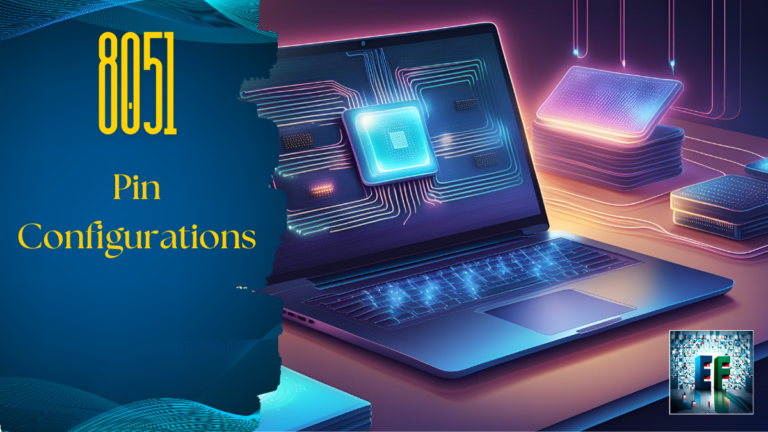In the world of microcontroller programming, mastering interrupt handling is crucial for developing efficient and responsive embedded systems. The 8051 microcontroller, with its versatile interrupt structure, offers powerful capabilities for managing multiple interrupt sources. In this comprehensive guide, we’ll delve into 10 essential hacks for optimizing interrupt priority in 8051-based systems, providing you with the knowledge and techniques to take your embedded programming skills to the next level.
Table of Contents
1. Understanding the 8051 Interrupt Priority System
Before we dive into the hacks, it’s essential to grasp the fundamentals of the 8051’s interrupt priority system. The 8051 microcontroller supports five interrupt sources, each with its own vector address and priority level. These interrupts include:
- External Interrupt 0 (INT0)
- Timer 0 Overflow
- External Interrupt 1 (INT1)
- Timer 1 Overflow
- Serial Port
The 8051 allows for two priority levels: high and low. By default, all interrupts are set to low priority. However, we can manipulate the priority levels to suit our specific application needs.
2. Leveraging the IP (Interrupt Priority) Register
One of the most powerful tools at our disposal for managing interrupt priorities is the IP (Interrupt Priority) register. This 8-bit register allows us to set the priority level for each interrupt source individually. Here’s a breakdown of the IP register bits:
IP.7 | IP.6 | IP.5 | PT2 | PS | PT1 | PX1 | PT0 | PX0
Where:
- PT2: Timer 2 interrupt priority (8052 and higher)
- PS: Serial Port interrupt priority
- PT1: Timer 1 interrupt priority
- PX1: External Interrupt 1 priority
- PT0: Timer 0 interrupt priority
- PX0: External Interrupt 0 priority
To set an interrupt to high priority, we simply set the corresponding bit in the IP register to 1. For example, to set External Interrupt 0 to high priority:
IP |= 0x01; // Set PX0 bit to 1
3. Implementing Nested Interrupts
One of the most powerful techniques for managing complex interrupt-driven systems is nested interrupts. This approach allows higher-priority interrupts to interrupt the execution of lower-priority interrupt service routines (ISRs). To enable nested interrupts in the 8051:
- Set the EA (Enable All) bit in the IE register to 1.
- Configure interrupt priorities using the IP register.
- Use the
RETIinstruction at the end of each ISR to ensure proper interrupt nesting.
Here’s a simple example of nested interrupt implementation:
#include <reg51.h>
void INT0_ISR(void) __interrupt(0) {
// High-priority ISR code
// ...
EA = 1; // Re-enable interrupts to allow nesting
}
void Timer0_ISR(void) __interrupt(1) {
// Lower-priority ISR code
// ...
}
void main(void) {
EA = 1; // Enable global interrupts
EX0 = 1; // Enable External Interrupt 0
ET0 = 1; // Enable Timer 0 interrupt
IP = 0x01; // Set INT0 to high priority
while(1) {
// Main program loop
}
}
4. Optimizing Context Switching
Efficient context switching is crucial for maintaining system responsiveness when dealing with multiple interrupts. To minimize the overhead of context switching:
- Use register banks to store context for different priority levels.
- Utilize the
PUSHandPOPinstructions judiciously to save and restore only necessary registers.
Here’s an example of optimized context switching using register banks:
ORG 0000H
LJMP MAIN
ORG 0003H ; INT0 ISR vector
LJMP INT0_ISR
ORG 000BH ; Timer 0 ISR vector
LJMP TIMER0_ISR
ORG 0030H
MAIN:
MOV IE, #10000011B ; Enable INT0 and Timer 0 interrupts
MOV IP, #00000001B ; Set INT0 to high priority
SETB EA ; Enable global interrupts
; Main program loop
SJMP $
INT0_ISR:
PUSH PSW
MOV PSW, #00001000B ; Select Register Bank 1
; High-priority ISR code
POP PSW
RETI
TIMER0_ISR:
PUSH PSW
MOV PSW, #00010000B ; Select Register Bank 2
; Lower-priority ISR code
POP PSW
RETI
5. Utilizing the Interrupt Enable (IE) Register
The IE (Interrupt Enable) register is another crucial tool for managing interrupts in the 8051. This register allows us to selectively enable or disable individual interrupt sources. Here’s the structure of the IE register:
IE.7 | IE.6 | IE.5 | ET2 | ES | ET1 | EX1 | ET0 | EX0
Where:
- EA (IE.7): Enable All interrupts
- ET2: Enable Timer 2 interrupt (8052 and higher)
- ES: Enable Serial Port interrupt
- ET1: Enable Timer 1 interrupt
- EX1: Enable External Interrupt 1
- ET0: Enable Timer 0 interrupt
- EX0: Enable External Interrupt 0
To enable a specific interrupt, set the corresponding bit to 1. For example, to enable Timer 0 interrupt:
IE |= 0x02; // Set ET0 bit to 1
6. Implementing Interrupt Latency Reduction Techniques
Interrupt latency refers to the time delay between the occurrence of an interrupt and the execution of its corresponding ISR. To reduce interrupt latency:
- Keep ISRs as short as possible.
- Use assembly language for time-critical ISR sections.
- Utilize the 8051’s fast interrupt response mode for external interrupts.
Here’s an example of a low-latency ISR implementation:
ORG 0003H ; INT0 ISR vector
PUSHALL ; Custom macro to push all registers
SETB P1.0 ; Set output pin high (fast response)
; Rest of the ISR code
POPALL ; Custom macro to pop all registers
RETI
7. Leveraging Interrupt Polling for Non-Critical Tasks
While interrupts are powerful, they can introduce overhead for non-critical tasks. Interrupt polling can be an effective alternative for handling less time-sensitive events. Here’s an example of interrupt polling for a button press:
#include <reg51.h>
sbit BUTTON = P1^0;
void main(void) {
while(1) {
if (!BUTTON) { // Active-low button press
// Handle button press
while (!BUTTON); // Wait for button release
}
// Other non-critical tasks
}
}
8. Implementing Software Interrupts
The 8051 doesn’t have built-in software interrupts, but we can simulate them using the INT instruction. This technique allows us to trigger interrupts from software, providing flexibility in interrupt-driven designs. Here’s an example:
ORG 0000H
LJMP MAIN
ORG 0003H ; INT0 ISR vector
LJMP SOFTWARE_INT_HANDLER
ORG 0030H
MAIN:
MOV IE, #10000001B ; Enable INT0
SETB EA ; Enable global interrupts
; Main program loop
INT 0 ; Trigger software interrupt
SJMP $
SOFTWARE_INT_HANDLER:
; Handle software interrupt
RETI
9. Utilizing Timer Interrupts for Precise Timing
The 8051’s timer interrupts are invaluable for implementing precise timing in embedded applications. By configuring the timer registers and enabling timer interrupts, we can create accurate time-based events. Here’s an example of using Timer 0 for a 1ms interrupt:
#include <reg51.h>
void Timer0_ISR(void) __interrupt(1) {
TH0 = 0xFC; // Reload timer for 1ms (assuming 12MHz crystal)
TL0 = 0x18;
// 1ms timer code
}
void main(void) {
TMOD = 0x01; // Timer 0 in 16-bit mode
TH0 = 0xFC; // Initial timer value for 1ms
TL0 = 0x18;
EA = 1; // Enable global interrupts
ET0 = 1; // Enable Timer 0 interrupt
TR0 = 1; // Start Timer 0
while(1) {
// Main program loop
}
}
10. Implementing a Custom Interrupt Dispatcher
For complex systems with multiple interrupt sources, a custom interrupt dispatcher can provide fine-grained control over interrupt handling. This approach involves using a single interrupt vector to handle multiple sources, determining the specific interrupt source in software. Here’s a basic implementation:
#include <reg51.h>
void Interrupt_Dispatcher(void) __interrupt(0) {
if (TF0 == 1) { // Timer 0 overflow
TF0 = 0; // Clear interrupt flag
// Handle Timer 0 interrupt
}
else if (RI == 1 || TI == 1) { // Serial interrupt
RI = TI = 0; // Clear interrupt flags
// Handle Serial interrupt
}
// Check for other interrupt sources
}
void main(void) {
EA = 1; // Enable global interrupts
EX0 = 1; // Enable External Interrupt 0
ET0 = 1; // Enable Timer 0 interrupt
ES = 1; // Enable Serial interrupt
while(1) {
// Main program loop
}
}
In conclusion, mastering these 10 8051 interrupt priority hacks will significantly enhance your ability to design and implement efficient, responsive embedded systems. By leveraging the 8051’s versatile interrupt structure and applying these advanced techniques, you’ll be well-equipped to tackle even the most complex real-time applications. Remember to always consider the specific requirements of your project when implementing these strategies, and don’t hesitate to experiment with different combinations to find the optimal solution for your unique challenges.







